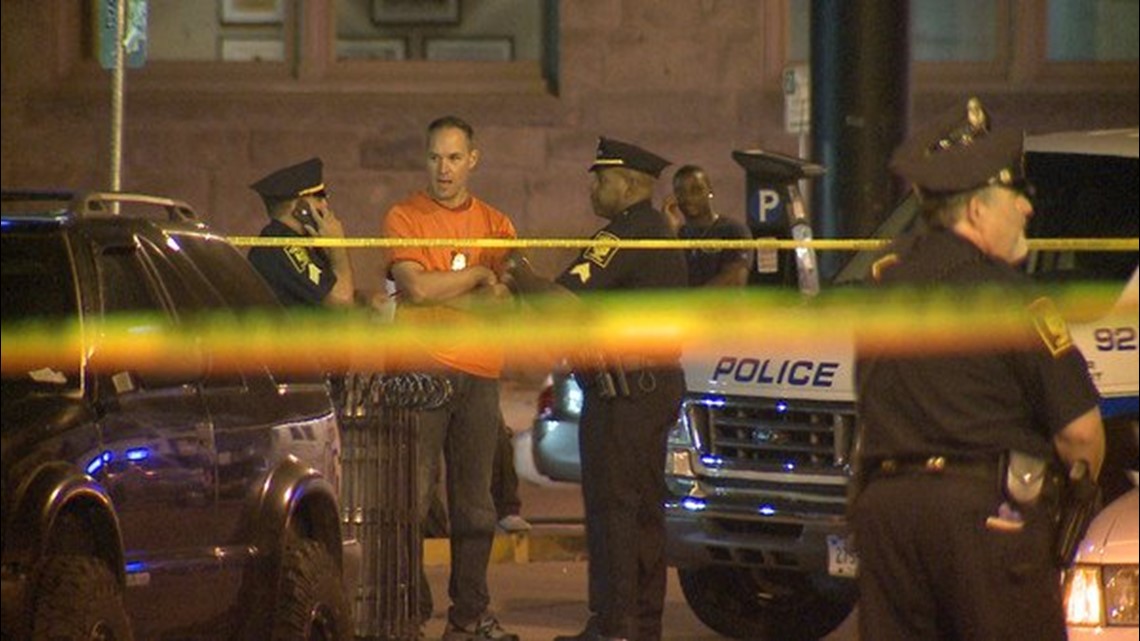

By Stephen Busemeyer, Hartford Courant
HARTFORD — Despite nearly two dozen homicides in the capital city last year, serious crime was down overall, and police said 2013 was “historically peaceful” at times.
Serious crime — defined as murder, rape, robbery, aggravated assault, burglary, larceny and auto theft — declined by about 7 percent, according to Hartford police statistics. There were 23 homicides, one more than in 2012, but for the first time in years, there were two 3-month periods with no homicides.
Along with the drop in crime, the city saw a 21 percent decline in the number of arrests, especially for nonviolent crimes — all part of the city’s strategy to focus on preventing violent crime, said Lt. Brian Foley, commander of the city’s major crimes division.
“We can’t arrest and investigate our way out of the crime problem in Hartford,” Foley said. “We have to dedicate more and more resources to prevention.”
The city’s Shooting Task Force, a police division that focuses on combating gun crimes, was cut by about half mid-year because of budget constraints. The number of shootings went up; staffing was later restored, and gun violence dropped.
Other efforts to boost employment, education and income, such as the Opportunities Hartford program and the summer youth employment program, help keep crime down in the long term, said Mayor Pedro Segarra.
Fifty-one people were arrested on murder charges in 2013 — an increase of more than 18 percent. Of the 23 homicides in 2013, police have made 12 arrests, and more are “in the pipeline,” Foley said.
Segarra said city police are solving homicides and violent crimes at a rate far above the national average.
“We’re being very strategic in our efforts,” the mayor said.
Aggravated assaults, considered “violent crimes” along with murder and rape, were down by nearly 13 percent in 2013 from 2012, statistics show — from 979 incidents in 2012 to 855 incidents in 2013. Arrests were up 6.3 percent.
The number of crimes classified as rape increased from 39 to 63, but Foley attributed the increase to a change in how the crime is defined for the federal government. The definition now includes male-on-male and female-on-female assaults, among other incidents, he said.
The number of rapes is still down from 2011 and 2009, even with the more broad definition, Foley said. There were 30 rape arrests in 2012 and 31 in 2013.
But police made far fewer arrests for many nonviolent crimes.
In 2013, police made 872 arrests on drug charges, down more than 44 percent from 2012, when police tallied more than 1,500 busts. Arrests were also sharply down for robbery, burglary and breach of peace/disorderly conduct.
“Our main focus has to be on violent crime,” Foley said.
“We’ve turned the corner not trying to make drug arrests,” he said. “But we are focusing on where they’re tied in with violent crime. Our narcotics division works directly with the shooting task force.”
Juvenile arrests were down 20 percent as well — a positive step, Foley said.
“We’re trying to eliminate the pipeline from the schools to the prison,” he said. Instead of arresting youths, police should be trying to keep them out of the criminal justice system, he said.
“We have to get cops not to make arrests in those situations but make sure the proper resources are provided to the children,” Foley said.
Segarra said police will also emphasize “community policing” efforts by working closely with neighborhood groups.
“These are complicated issues that have to do with education, with employment,” Segarra said. “So we’re taking a very comprehensive approach, which is why we continue to have success. We’ve made progress, but we have more to do.”
